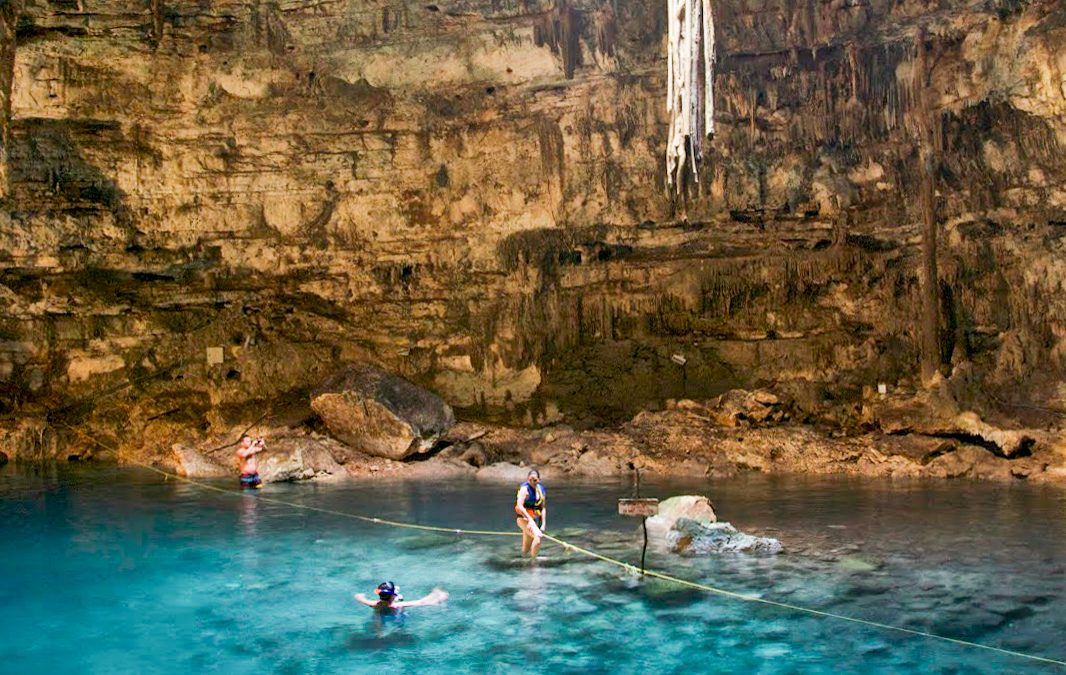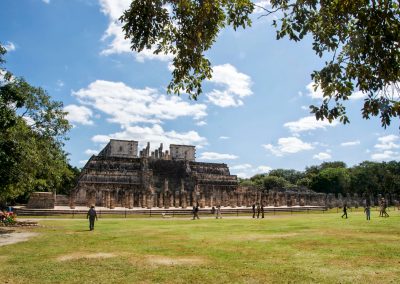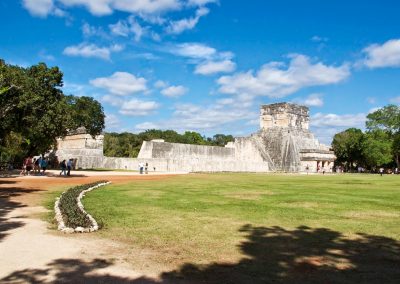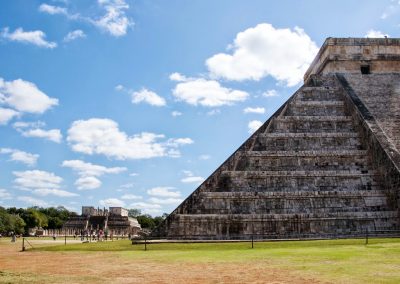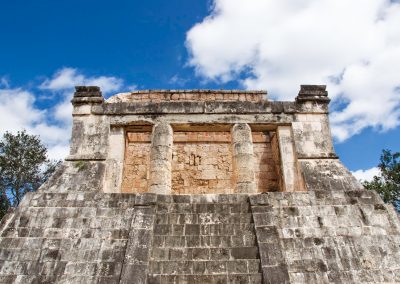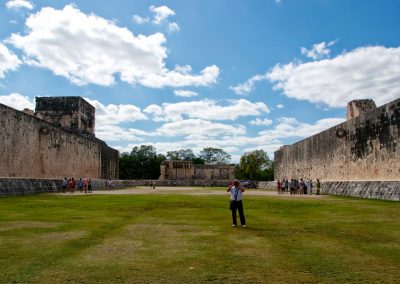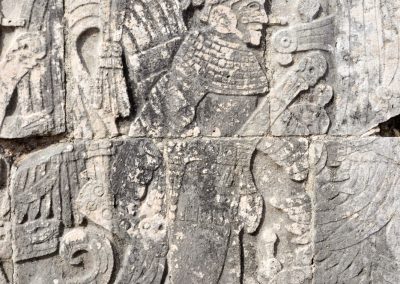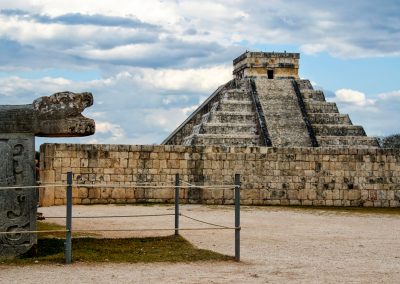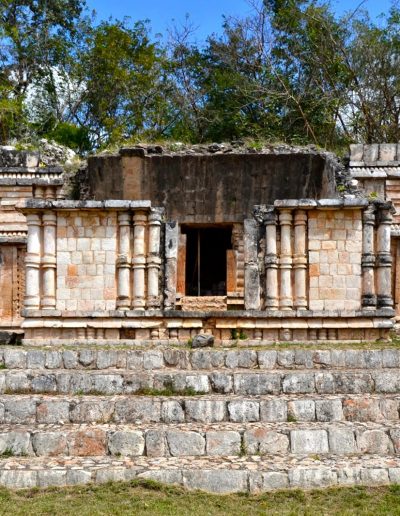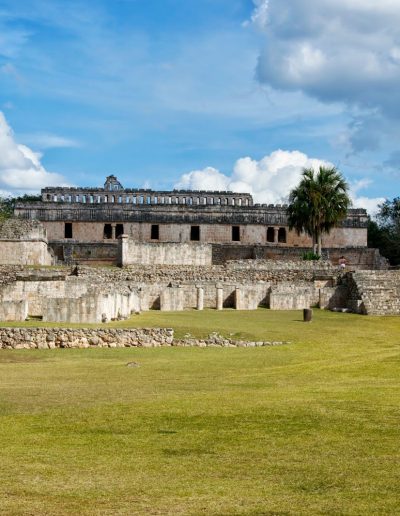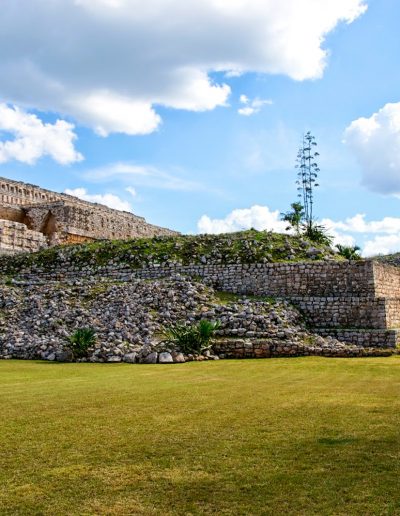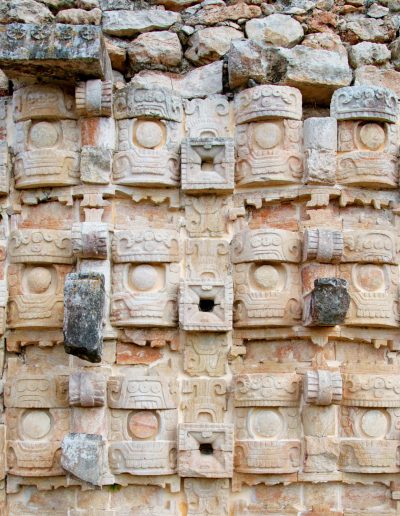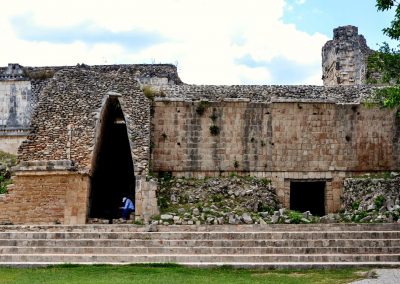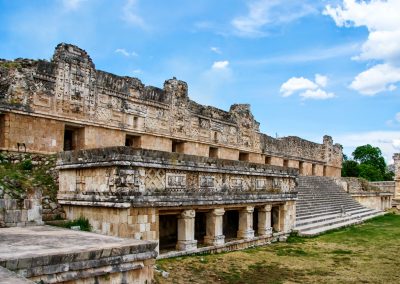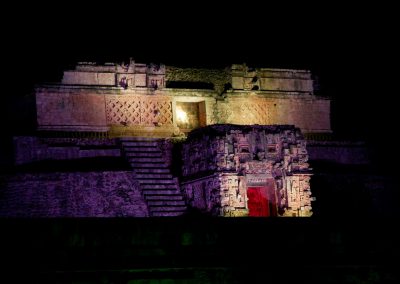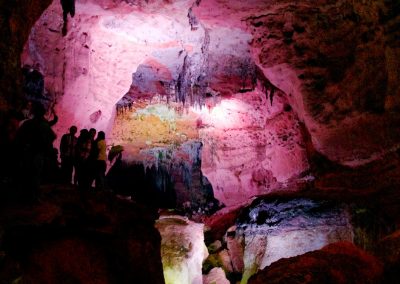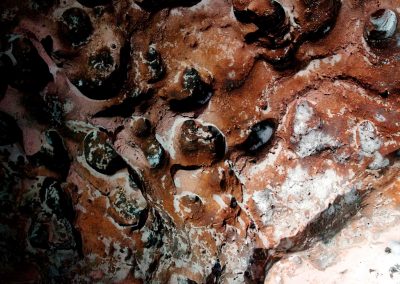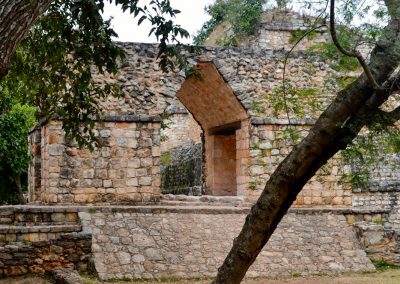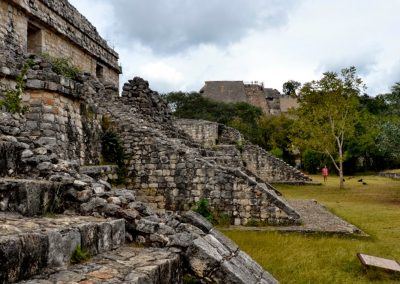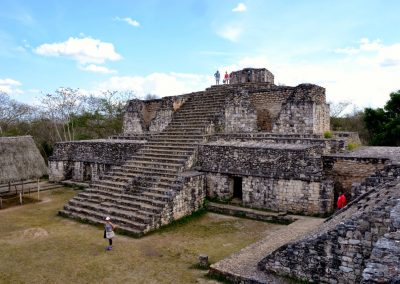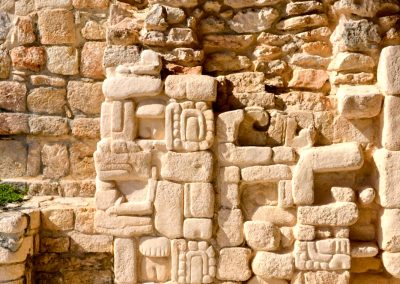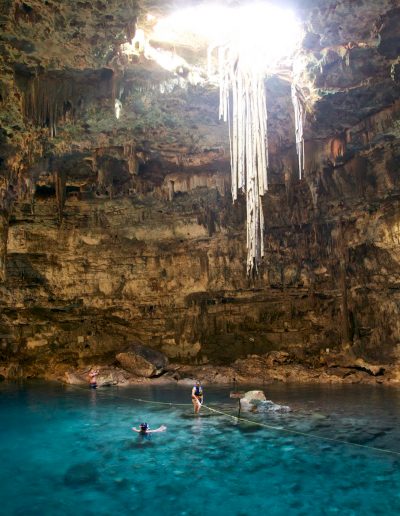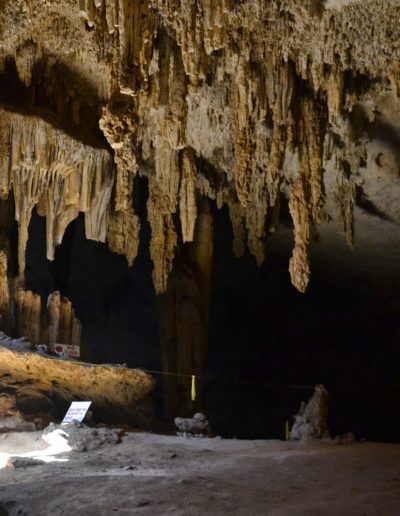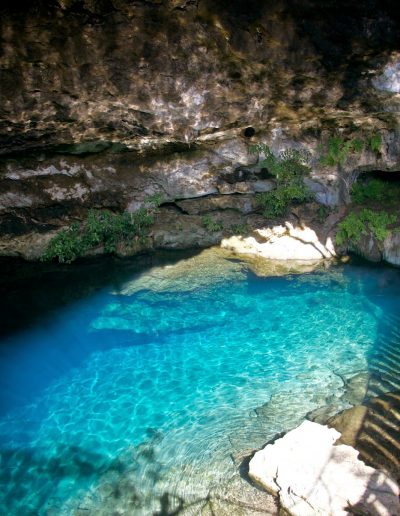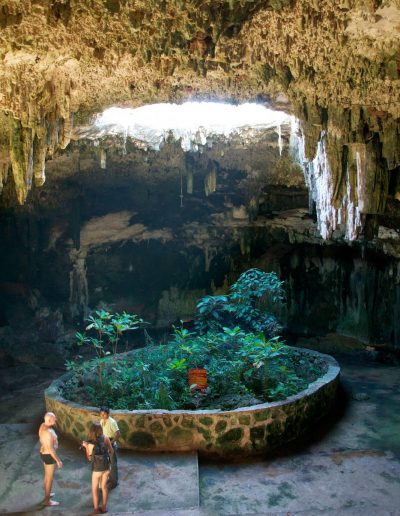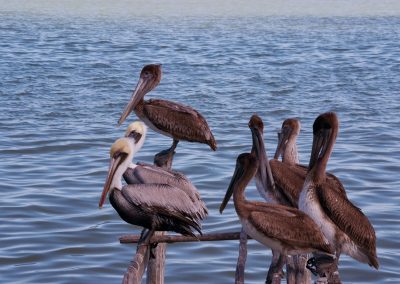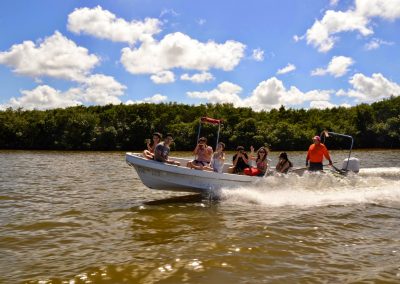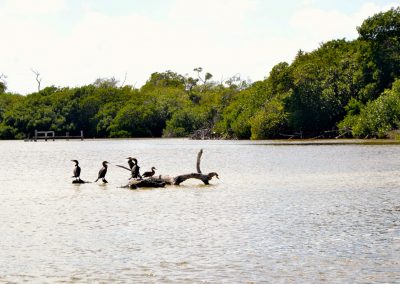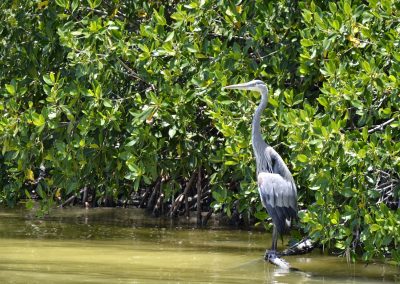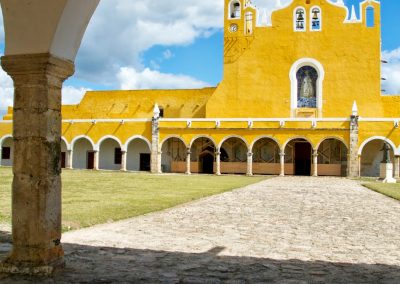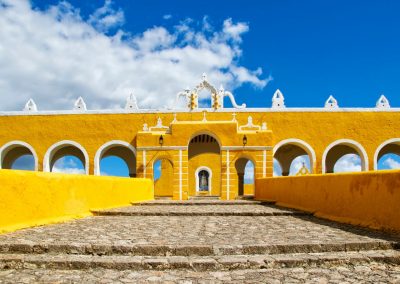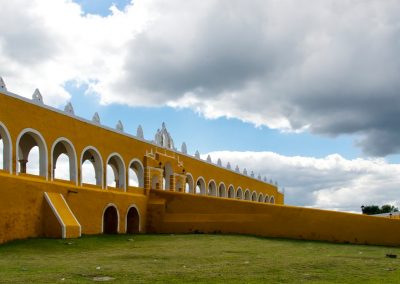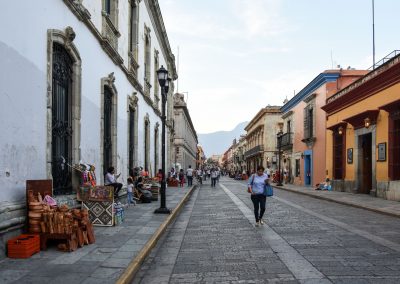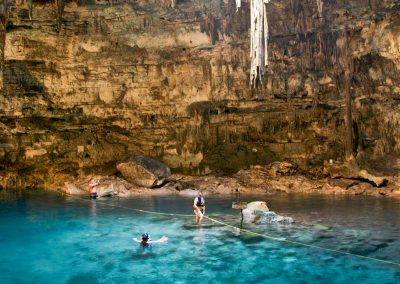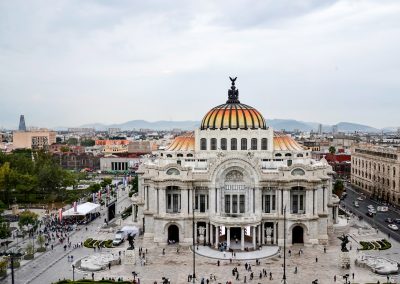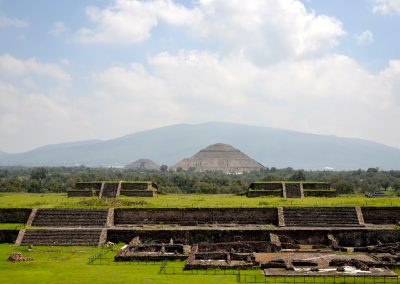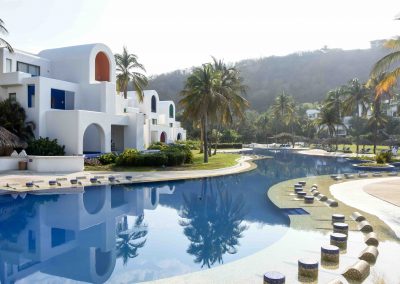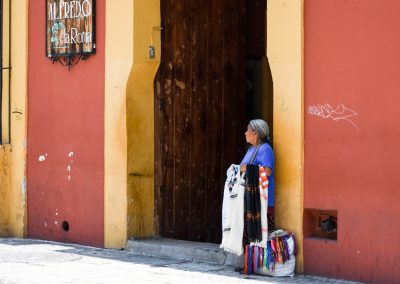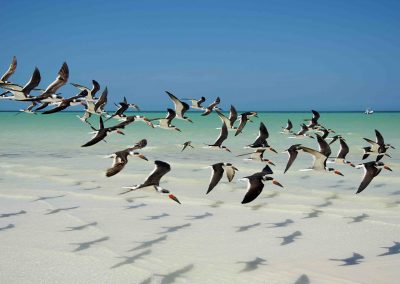The Yucatan peninsula is one of the most impressive places I have ever visited! I lived in its capital, Mérida, for a semester, and this city is a great starting point to visit several other places of this beautiful state, since it is in a very central position in relation to the different places I bring you today. First of all, do not miss the post about what to do in Mérida, so that we continue to the various day tours that you can do from this wonderful city.
Mérida is surrounded by an infinite number of Mayan ruins, incredible cenotes (the natural pools that spring from underground rivers, unique in the region), ancient haciendas of henequen (the so-called green gold), calm beaches bathed by the Gulf of Mexico, and curious mayan villages who punctuate the way. There is always an adventure to explore in Yucatán!
Chichén Itzá
Chichén Itzá means, in the Mayan language, “the mouth of the well of water wizards” and is known all over the planet for being one of the seven wonders of the modern world! Not only for its architecture but also for all the acoustic phenomena and meanings related to this city, it is one of the must-see places on the peninsula – but they are not my favorite ruins! An example of acoustic phenomena is clapping in front of the staircase of El Castillo (or Temple of Kukulkan), the largest pyramid – you will hear the echo of the quetzal, the sacred bird of this culture. If we talk about meanings we have the example of the staircase of this pyramid – if we add the 91 steps on each of the four sides, plus a big step at the top, we have the 365 days of the year. Nowadays it is forbidden to climb El Castillo, not only because UNESCO wants to preserve the monument but also because, unfortunately, a few years ago, a German tourist fell and died (they say it was the last Mayan sacrifice).
Another of the great attractions of this archaeological site is the largest pok-ta-pok field (the mayan ball game that also enters the film “El Dorado”) that I visited in the whole country. Two teams of seven players each, would play against each other, six players in the center and the captain of each team on top, close to each ring. The goal was to pass a 3kg ball inside the arch, which was 8m high, touching the ball with any part of the body except hands and feet. The captain who scored first won the game and was the great one chosen by the Gods to be sacrificed. The captain of the losing team would have to decapitate the winning captain, something quite shameful, since he was not chosen by the Gods, and was then banished from the city and new players were recruited – eventually everyone would die, or beheaded, or expelled. Also in the pok-ta-pok field there is an interesting acoustic phenomenon – being on one side of the field, when there is some noise, that noise echoes seven times, the number of players of each team.
An interesting time to visit Chichén Itzá is at the equinoxes. On March or September 21, at sunset, the light descends the serpent from the Kukulcan Temple, looking like it is alive. Unfortunately in the year I went there were so many clouds that the sun did not appear, preventing us from seeing the phenomenon.
Unfortunately this is one of the most visited places in Mexico so it is full of craft sellers and even more full of tourists. It is difficult to escape from the vendors, but to avoid the tourists you should arrive as early as possible! The ruins open at 8 am and close at 4:30 pm and the large crowds, which come from the resorts in the Riviera Maya, start arriving around 11 am. The journey from Mérida to Chichén Itzá takes about 90 minutes and the best option is to book a tour from Mérida, which preferably includes a visit to some cenotes. Entry to the archaeological site is about 500$MX.
Ruta Pucc – Uxmal, Kabah, Labna, Xlapak, Sayil
The Ruta Pucc is a fascinating tour to do from Mérida. This route crosses Yucatán and connects several ruins from the Pucc architectural period, whose most characteristic feature is the repetition on the facades of Chaac, the god of rain. It is possible to visit these archaeological sites by bus, on an organized tour (which has the advantage of already having a guide included) or in a private car and as it is not as famous as other places like Chichén Itzá, it is possible to admire these structures, built somewhere between 600 -1100 AD, almost empty. The different complexes are connected by sacbes, the old Mayan roads.
In its most basic definition, the Ruta Pucc extends for 30km and connects the three complexes of Labna, Xlapak and Sayil, but in a broader definition it also includes the cities of Kabah and Uxmal, for me the most interesting of the five, doubling the route length to 58km. The five ruins are considered a World Heritage Site by UNESCO, based on the archaeological site of Uxmal, the largest and most impressive.
It is best to start the tour at Labna, the furthest from Mérida, which reached its apogee between 800 – 1000 AD and where around 2500 people lived. After a walk through the forest appears El Palacio, one of the longest structures in the Pucc region, and on the other side of the field, under the intense Yucatec sun, we found El Arco. Between the two structures we find El Mirador pyramid, which today looks just like a structure built on top of a hill full of stones. Entry costs 55$MX and is open from 8am to 5pm.
The Xlapak ruins are the smallest complex on the route but that is not why they should be ignored, even because it is the only complex of the five whose entrance is free of charge! There are three complexes of palaces in Xlapak, one of which stands out for being adorned by masks of the god of rain, Chaac. This palace is surrounded by ruins that were once residential complexes, all in the middle of the dry Yucatec jungle. This city also reached its peak in the classic Mayan period between 800 – 1000 AD and is open from 8am to 5pm.


The big three-story palace in Sayil is an impressive sight after a visit to Xlapak, however it is not permitted to climb the grand staircase in this building. But, as in most of the ruins of Ruta Puuc, be sure to observe the curious Chaac masks up close. It is believed that it reached 10,000 inhabitants at its highest point, around year 900. Entrance costs 55$MX and is open from 8am to 5pm.
After visiting the three “basic” cities on the Pucc route, the ruins begin to grow. We are in Kabah, another city believed to have reached 10,000 inhabitants, between 600 and 1000 A.D. Here we cannot count on the shade of the trees, as these fascinating ruins have been secluded from the adjacent forest. The Codz Pop and the Masks palaces are the only structures that can be looked inside in the entire complex and the most interesting ones, especially the Palace of the Masks, with the largest number of Chaac masks in the entire peninsula, more than 300! Entry costs again 55$MX and is also open from 8am to 5pm.
We finally arrive at Uxmal, the most important complex of them all. I was there twice, the first at night, at the culmination of the Ruta Pucc, to see the show “Luz y Sonido“, a low quality videomapping in which the history of the ruins is told only in Spanish, the second when I just went to visit this complex, during the day, because after all I had not seen it with light! Uxmal is undoubtedly the highlight of this route and due to its scale, it is important to arrive with a few hours available to visit! Here, around 1100 years ago, lived 25,000 Mayas, spread over multiple palaces of political, residential and religious importance, pok-ta-pok fields and even a huge and steep pyramid! It is not allowed to climb this pyramid but it is possible to climb and enter many of the buildings spread over the area and have an impressive overview from the top of the Palacio del Gobernador! Entrance costs 418$MX and is open from 8am to 5pm.
When I took the Ruta Pucc tour, we also visited the caves of Loltun. First of all, notice that it is impossible to visit the five archaeological complexes and the caves in one day, that’s why we didn’t visit Uxmal that day, we just watched the night show, and I had to return another day. If you have two days available I suggest you visit the caves, which are worthy, and the first four complexes on the first day and the next day visit Uxmal, early in the morning, when it is cooler. It is only possible to visit the caves with a guide and the departure times are as follows: 9.30 and 11am, 12:30, 2, 3 and 4pm. The tour will be in Spanish unless the majority of the group does not speak the language and the entrance fee is 141$MX.
Ek Balam
Ek Balam is an archaeological site 30km north of the city of Valladolid and its name means, in maya, black jaguar. Considered to be pre-classic Maya, it can be said that it served as a draft for the big cities of the classic model, but it is therefore not less interesting – and obviously, because it is less known, it has very little tourism, something essential to better appreciate a place. To enter the city, they had a set of three walls, in a kind of labyrinth with misaligned doors, only 3m high – high enough to prevent the average 1.45m Maya from going up. Finally, at the last door, they had to climb a ramp, which forced them to have their bodies in a bowed position, in respect to the city. Inside, we found several pyramids and also a pok-ta-pok field. Entry costs 413$MX (must have become famous, because in 2015 was free or so cheap I don’t remember paying) and is open between 8am and 5pm.
1.5 km from the archaeological site we find the X’canché cenote. To get there you can go on foot, by bicycle (which is rented at the beginning of the route) or pay for a “bi-taxi” to take you. The cenote is open (meaning is not in a cave) and the water is 15m below ground level, it has life jackets for those who want to rent them because the waters are deep and it is also possible to rappel down to the water or slide over the cenote, all at one extra price, and also camping – I spent one night there at the time of the equinox in 2015 and it was very nice, in the morning we were awakened by the famous bird Toh, with its long pendulum tail.
Cenotes
The Yucatan Peninsula is known for having no surface rivers, only underground rivers. And any access to these underground rivers, whether open to the air or in caves, is called cenotes. There are thousands of cenotes on the peninsula, some look like lakes on the surface, others are underground and may have only a small opening of light, with vegetation coming in, looking like we are in a beautiful movie, and there are even some that are found under residences and then exploited by the inhabitants themselves. In almost all cenotes life jackets are available for rent – the number of Mexicans who do not know how to swim is impressive – and in some it is also possible to rent snorkel equipment!
The first cenotes I visited were also the most beautiful. Not far from the city of Valladolid and the ruins of Chichén Itzá, we find two cenotes that share tourist infrastructures, the cenotes of Samulá and Xkeken. I visited them precisely after visiting the archaeological site, ideal for cooling off. These two cenotes are semi-closed, which gives us a feeling that we are in another world, and have countless little fishes that eat the dead skin of our feet, it makes a lot of itching if we stay still for a moment, it’s so funny! That day we also went to the Oxman cenote, inside an old hacienda, this one is completely open and has a rope, liana style, to jump into the water.
There are also some regions known for their cenotes, such as the Homun region. Here there are several bike-taxis that sell tours to the different cenotes, it depends on the visitor how much time he wants to spend in that place, how many cenotes he wants to visit, and then a price is agreed with the local boys. When I went I visited four cenotes: Cenote Bal-Mil, Cenote Yaxbacaltun, Cenote Santa Rosa and Cenote Stza Ujun Kat. The first was in a cave, full of stalactites in which the only natural light came from the hole where the stair had been installed to access the depths of the earth and which accompanied the roots of a tree. The second was the most open, with plenty of natural light. The third is completely closed, with a diving platform. The fourth was the most interesting and different – under a large hole that gave it some natural light, they built a small wall that delimited an area with several plants, a kind of floral arrangement to decorate the cave, and then we had water all around and the “fattest” stalactites I’ve ever seen, some already touching the water.
Another region known for its cenotes is Cuzamá. The peculiarity here is that there is a railway line that connects the various cenotes but instead of having a train, we have a miner car with wooden benches pulled by horses that take us through the Yucatecan forest to the three cenotes to visit, the first in a cave, the second also in a cave but with the peculiarity of being 24m deep, in which you reach the water through several wooden and metal ladders – and obviously when there is no natural light (only artificial light) and the waters of the cenote are deep, we immediately start to imagine monsters pulling us to the depths, like in a low quality horror film 😛 – and the third one already open, as I like them most, undoubtedly the most scenic of the three. Prices should vary between 300 and 400$MX, depending on the tour operator (X’Tohil, Cuzama, and Chunkanán, each one go to different cenotes, those in my photos are with the last operator).
Rio Lagartos and Las Coloradas
The ideal place for animal life lovers, this natural park on the northernmost tip of the state is the ideal place for a peaceful afternoon with friends, crocodiles, flamingos, pelicans and other birds. Arriving in the city of Rio Lagartos you have to find a boat to take you on a tour (the two times I went I had everything organized since Mérida, once with a group of exchange students, the second with the school. It is probably possible to do the same). The park consists of an arm of water parallel to the sea, with several entrances, and is mostly made up of mangroves. The tour consists of some boat time to observe the fauna and then they leave us in a muddy area where it is possible to observe the flamingos – unfortunately they do not allow us to get very close, whenever we tried to get closer they flew away, which is also itself a wonderful phenomenon. The two times I went, they also showed us with a kind of trilobite.
It is also typical for this region to get covered with “mayan mud”, which they say does wonders for the skin. All of this with the boats, which take us to a saline for this part of the experience. Returning to the city, it is possible to wash ourselves on the pier where the boats leave us.
Other salines that are close to Rio Lagartos and that are always part of the visit are Las Coloradas. They receive this name because they have microorganisms that turn the waters pink. The two times I went it was already close to sunset, but I am very curious to see them in broad daylight!
Izamal and Valladolid
Throughout the peninsula there are several cities, towns and villages of great interest. But Mexico invented a way to highlight the most impressive ones, giving them the name of “Pueblo Mágico”. In Yucatán there are two – Izamal and Valladolid!
The first is just 50km east of Mérida and is known as the Yellow City as 90% of its buildings are painted that color. It is the ideal city for photographers! In the city center is the Franciscan convent of Santo António de Pádua (free entrance, 5$MX to enter the museum open from 10am to 1pm and from 3pm to 6pm from Monday to Saturday and from 9am to 5pm on Sundays). Throughout the city there are also several ruins from Mayan times. Be sure to visit the Kinich-Kakmo pyramid, which offers, from its high point, an overview of the city. One way to explore the city is in one of the horse-drawn carriages found in the main square, next to the convent (an hour costs 200$MX).
The other “Pueblo Mágico” and the second largest city in the state is Valladolid. I passed by three times but never visited further than the central square where the Church of San Servasio and the Municipal Palace are located. In the last one we can find the tourist information point and from there you can have an overview of the square, from the first floor, where you can also see several paintings representing the Mayans and the arrival of the Spaniards to the peninsula. The city of Valladolid may be a place to consider staying overnight, as the ruins of Chichén Itzá and Ek-Balam and some of the cenotes I mentioned are closer to this city than to Mérida. It is also important to try the marquesitas, a kind of sweet Mexican crepe, which are sold in the central square.
Obviously, there are more archaeological sites, more cenotes, more cities and more places to discover. I lived in Mérida for five months and left with many places yet to visit! For those who have been there, what other places do you consider obligatory?
If you liked this post and want to read more about my trips to Mexico, you can visit the following posts:

